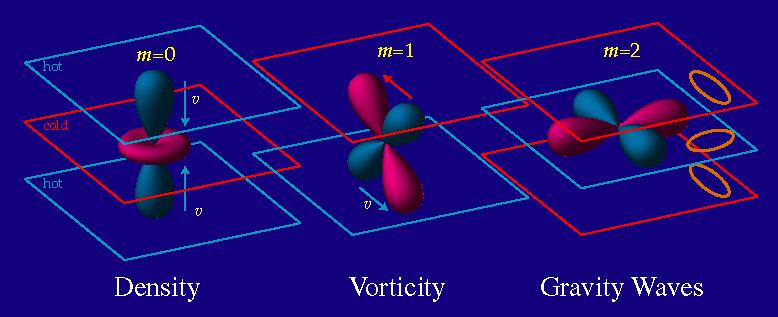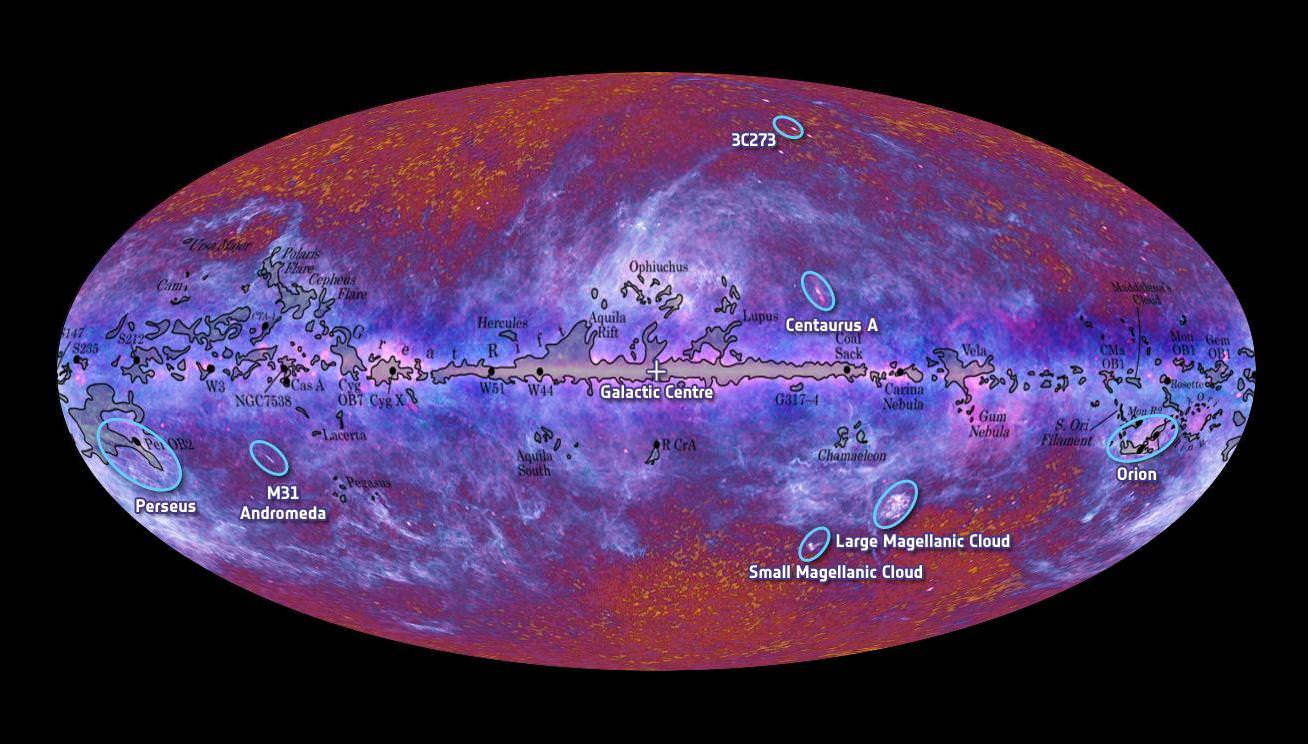[/caption]
Remember how you could once pick up a book about the first three minutes after the Big Bang and be amazed by the level of detail that observation and theory could provide regarding those early moments of the universe. These days the focus is more on what happened between 1×10-36 and 1×10-32 of the first second as we try to marry theory with more detailed observations of the cosmic microwave background.
About 380,000 years after the Big Bang, the early universe became cool and diffuse enough for light to move unimpeded, which it proceeded to do – carrying with it information about the ‘surface of last scattering’. Before this time photons were being continually absorbed and re-emitted (i.e. scattered) by the hot dense plasma of the earlier universe – and never really got going anywhere as light rays.
But quite suddenly, the universe got a lot less crowded when it cooled enough for electrons to combine with nuclei to form the first atoms. So this first burst of light, as the universe became suddenly transparent to radiation, contained photons emitted in that fairly singular moment – since the circumstances to enable such a universal burst of energy only happened once.
With the expansion of the universe over a further 13.6 and a bit billion years, lots of these photons probably crashed into something long ago, but enough are still left over to fill the sky with a signature energy burst that might have once been powerful gamma rays but has now been stretched right out into microwave. Nonetheless, it still contains that same ‘surface of last scattering’ information.
Observations tell us that, at a certain level, the cosmic microwave background is remarkably isotropic. This led to the cosmic inflation theory, where we think there was a very early exponential expansion of the microscopic universe at around 1×10-36 of the first second – which explains why everything appears so evenly spread out.
However, a close look at the cosmic microwave background (CMB) does show a tiny bit of lumpiness – or anisotropy – as demonstrated in data collected by the aptly-named Wilkinson Microwave Anisotropy Probe (WMAP).
Really, the most remarkable thing about the CMB is its large scale isotropy and finding some fine grain anisotropies is perhaps not that surprising. However, it is data and it gives theorists something from which to build mathematical models about the contents of the early universe.

Some theorists speak of CMB quadrupole moment anomalies. The quadrupole idea is essentially an expression of energy density distribution within a spherical volume – which might scatter light up-down or back-forward (or variations from those four ‘polar’ directions). A degree of variable deflection from the surface of last scattering then hints at anisotropies in the spherical volume that represents the early universe.
For example, say it was filled with mini black holes (MBHs)? Scardigli et al (see below) mathematically investigated three scenarios, where just prior to cosmic inflation at 1×10-36 seconds: 1) the tiny primeval universe was filled with a collection of MBHs; 2) the same MBHs immediately evaporated, creating multiple point sources of Hawking radiation; or 3) there were no MBHs, in accordance with conventional theory.
When they ran the math, scenario 1 best fits with WMAP observations of anomalous quadrupole anisotropies. So, hey – why not? A tiny proto-universe filled with mini black holes. It’s another option to test when some higher resolution CMB data comes in from Planck or other future missions to come. And in the meantime, it’s material for an astronomy writer desperate for a story.
Further reading: Scardigli, F., Gruber,C. and Chen (2010) Black hole remnants in the early universe.

